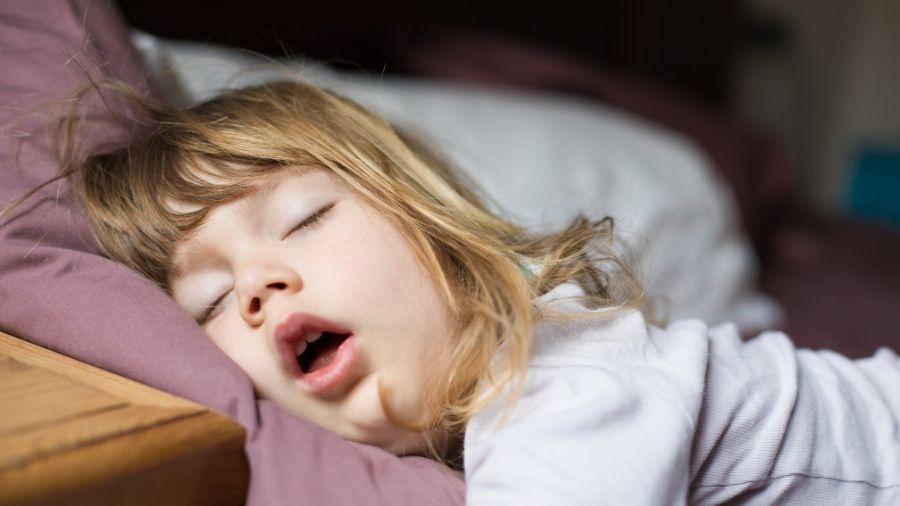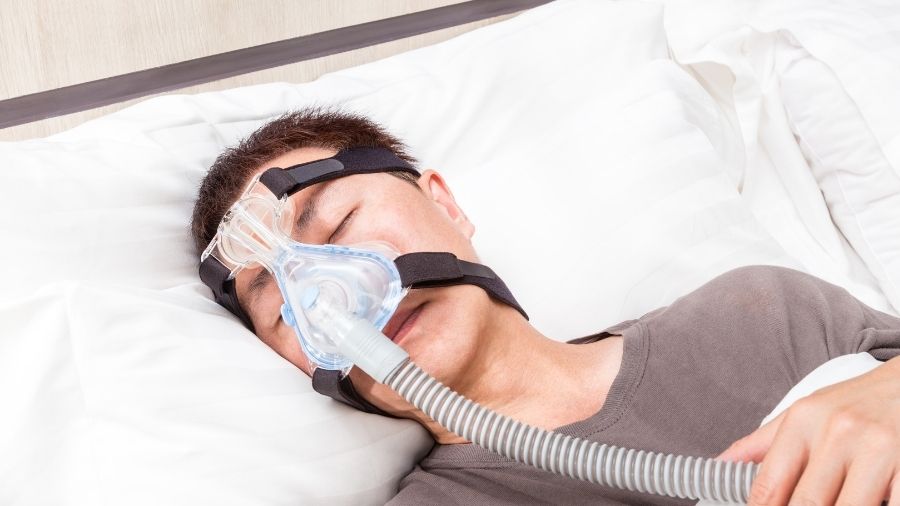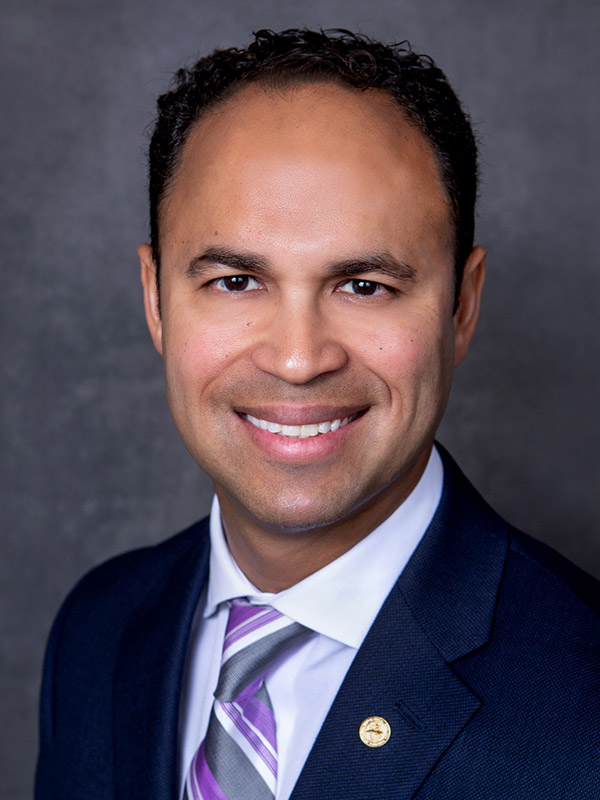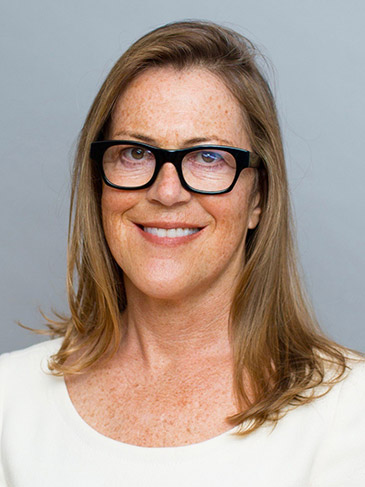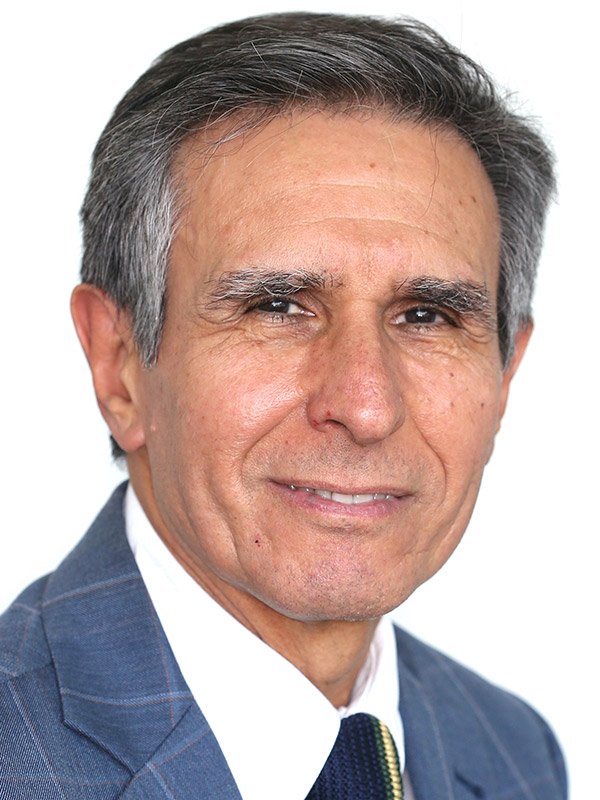Tackling obstructive sleep apnea
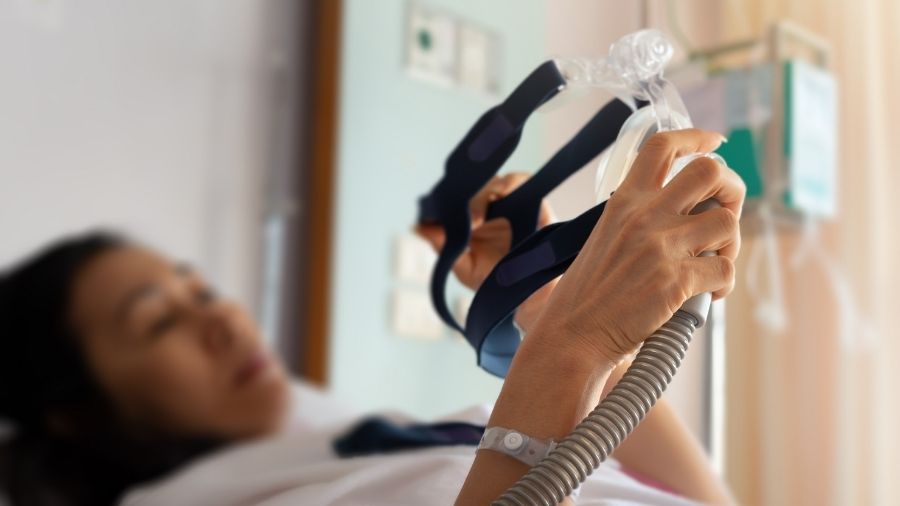
Treatment of obstructive sleep disorder (OSA)—believed to affect nearly 1 billion people worldwide—has come a long way in the past 40 years, and AO CMF faculty members say patients today can enjoy good outcomes with a combination of tailored treatment, a multidisciplinary approach, and careful risk management.
In a recent panel discussion, Latest Treatment Solutions in Obstructive Sleep Apnea: When Technology Is Not Enough and Surgery Is the Only Option, three acclaimed AO CMF faculty members provide insight on a vast range of OSA-related topics, from prevention and diagnostics to personalized care taking into account each patient’s phenotype and endotype.
Dr Sabine Girod, oral and maxillofacial professor emerita at the Stanford University Medical Center Department, United States, says the current OSA diagnostic picture is something of a conundrum.
“We are moving into more specialized, patient-specific medicine and surgery and we need good diagnostics to tailor our therapy to the patient’s needs,” says Girod, who moderated the discussion. “What are we doing today to improve diagnostics in obstructive sleep apnea?”
The role of diagnostics
Diagnostics in OSA have improved significantly over the past 20 years, says Dr Jose Barrera, a facial plastic and reconstructive surgeon in San Antonio, United States.
“Where we used to only look at one number—the apnea hypopnea index (AHI), we now realize there are multiple measures to be considered,” he says. “In fact, we understand now that the AHI as one number may not correlate with severity of patient outcomes and quality of life. Instead, other measures also need to be considered, such as the oxyhemoglobin desaturation index, [which is] the lowest point of saturation at night while the patient is asleep. There are multiple measures that can be ascertained from the polysomnogram.”
Beyond that, Barrera explains, it’s also important to look at the patient’s airway.
“There have been many advances in the dental community, looking at the posterior airway space and what this means,” says Barrera, who completed two surgical fellowships at Stanford University where he worked with Girod; is certified in otolaryngology, head and neck surgery; sleep medicine; and facial plastic and reconstructive surgery; and has published more than 70 articles in his areas of specialty. “But we still have yet to correlate that, and how to have real-time correlation between one discipline to the other can be difficult.”
In Europe and the United States, for example, drug-induced sleep endoscopy (DISE) is well advanced, and results from a multicenter trial have been published.
“And so, using DISE as a way to communicate about the airway is probably a good starting point in regard to diagnostics, Barrera says. “DISE is a way of looking at the airway while the patient is asleep, induced by medicine such as propofol. Even though it’s a drug-induced sleep, we can look at the specific site of obstruction, the pattern of obstruction, and the airway as a whole. So, that would be one area that would be a nice way to communicate and transfer patient information alongside the polysomnogram.”
While DISE is an expensive, additional procedure for the patient, Barrera says his center in Texas is part of a multicenter trial to which all participants contributed DISEs that were internally rated.
“The inter-rater and intra-rater reliability is about 67 percent, upwards of 70 percent. That is statistically significant,” he says.
Barrera added that DISE is required for certain new therapies, such as hypoglossal nerve stimulation, which uses an implantable pacemaker-sized pulse generator to sense chest wall movement during sleep and contract the genioglossus muscle by stimulation of the hypoglossal nerve. Genioglossus contraction gently protrudes the tongue, enlarging the retrolingual and retropalatal levels of the airway.
But not all patients need DISE, he notes.
“Certain patients—such as those with skeletal-dental deformities or patients with very large soft-tissue obstruction like enlarged tonsils—are very straightforward. The mild to moderate sleep apnea patient, the upper airway resistance syndrome patient—these are straightforward,” Barrera says. “But patients for whom other therapies have failed and those who cannot tolerate continuous positive airway pressure (CPAP) are wise to get DISE.”
Prevention is key
Prevention of OSA is key topic, says Dr René Rojas, an oral and maxillofacial surgeon at Clinica Santa Maria and Sleep Unit Hospital del Trabajador in Santiago, Chile.
“A lot of effort has been put into preventing and screening patients with sleep apnea, but I don’t think too much focus has been put on the growing population,” says Rojas, who is assistant professor of oral and maxillofacial surgery and director of the diploma in orthognathic surgery at Universidad Andrés Bello in Santiago.
Rojas noted that children—for example—may not experience the same symptoms as adults.
“I think it’s very important to detect some issues at an early stage; for example, mouth breathing or snoring patients. Snoring children should be put under screening because if they really have sleep apnea or even snoring, it has been shown that snoring alone affects physical and neurological development,” he emphasizes.
“For example, children suffering with behavioral problems at school should be screened for sleep breathing disorders,” Rojas adds. “It will affect their future. It is well known that sleep apnea is not a disease that appears suddenly: it goes from early childhood and develops. From my point of view, prevention is crucial. And there is the growing problem of obesity in addition to all these other symptoms. I think some of these issues should be especially important in detecting early sleep apnea problems in children.”
Cascading awareness of sleep apnea symptoms across the disciplines—orthodontists and dentists, for example—where children are seen on a regular basis can also play a role in prevention.
“I believe that teachers in schools, orthodontists, general dentists and pediatricians should be aware of sleep breathing disorders affecting children,” Rojas says. “I think one of the main issues is to let orthodontists know to avoid orthodontic compensation for skeletal deformities. That’s something we should be trying to talk about with orthodontists so that they can be aware for the future of these patients.”
For example, he says, it’s not uncommon for orthodontists to see retrognathic patients—class II mandible patients with lack of mandible development—and try to remove upper teeth to put the teeth in occlusion, not considering other aspects,” Rojas explains. “For example, they don’t ask if the child snores or if they suffer from mouth breathing. Some patients come to me as adults who have had a lot of long-term orthodontic treatments and they have no idea they may have some sleep and breathing problems.”
Conservative treatment
While OSA treatment is moving in new directions, Barrera explains that CPAP therapy is still the gold standard. However, compliance among patients using CPAP leaves much to be desired.
“It is noninvasive. The idea is to provide ventilation of the entire airway and avoid airway collapse. In doing so, many patients can receive some relief. However, according to the APPLES trial at Stanford, compliance can be as low as 39 percent in patients using CPAP,” he notes. “This is a very large cohort study of over 1,200 patients followed over five years.”
With that in mind, clinicians are looking for alternatives to CPAP—and a multidisciplinary approach again is key, he says.
“We think about noninvasive ways. Certainly, I believe a multidisciplinary approach is important when considering oral appliance therapy because the issue is also with compliance [as well as] side effects that can occur from mandibular repositioning devices,” says Barrera.
He emphasizes that patients experiencing temporomandibular joint disorders, exacerbation of that, or malocclusion, should not be candidates for mandibular repositioning. At the same time, obese patients are unlikely to do well with mandibular repositioning devices, Barrera says.
“So, we have to look at alternatives,” he says, “beginning with a good diagnosis, a fiberoptic scope at the very least, and DISE in some patients. But fiberoptic laryngoscopy will reveal things that you otherwise might not know or appreciate, such as: Is the soft tissue—tonsils, lateral pharyngeal walls, the tongue base—very large? Do we have nasal obstruction? In the form of nasal obstruction, we can evaluate not just septal deviations and turbinate hypertrophies, but also internal valve problems, cross-sectional area deficiencies, then move on to transverse deficiencies of the maxilla.”
Patients can then be stratified into whether they will benefit from medical therapy for the nose, medical therapy for the airway such as CPAP, or dental therapy such as an oral appliance.
“Then beyond that, certain patients are going to fall into different categories,” he says, noting that this is where the topic of personalized care comes into play, “where patients go on to receive soft-tissue surgery, radiofrequency, distraction osteogenesis, maxillary expansion, or hypoglossal stimulation.”
“There are myriad options for patients today,” Barrera says.
Battling obesity
For obese OSA patients, losing weight often leads to better outcomes but it’s rarely that simple.
“Obesity is quite a bit of a problem. We have seen that it’s very difficult to make patients lose weight before any other treatment,” says Rojas. “However, if we put a patient under treatment, it allows better outcomes in terms of loss of weight. It is difficult to [tell] a patient, ‘Please, go lose some weight and then come back.’ It’s very unrealistic.”
Again, a multidisciplinary approach is often best.
“We have to deal with that problem, and we have to work with other disciplines: pediatricians and, in the case of adults, some nutrition specialists. That’s the only way we can deal with these complex patients,” Rojas says, adding that many obese patients have cardiovascular disease which must be dealt with before undertaking treatment for OSA. “In those cases, if we decide the patient should have surgery, we may first need to put the patient on CPAP before surgery to decrease cardiovascular risks.”
Barrera said that in children with sleep apnea, obesity “ends up being a confounder and an additional risk factor.” He says a recent Stanford study shows that miniscrew-assisted rapid palatal expansion (MARPE) was as effective as tonsillectomy in treating children with OSA but the combination was even more effective.
“It would be important for patients with sleep apnea who are children and have had a polysomnogram to be followed long-term because there could be rates of relapse associated with MARPE,” he says. “I think it’s a valid approach to consider MARPE part of an orthodontic plan if OSA is also in the picture. We cannot say that we should perform expansion for every child, just like we can’t say we shouldn’t perform tonsillectomy for every child. We need to first diagnose the problem and see if it’s associated with OSA.”
The evolution of the field
Treatment of OSA has come a long way in recent decades but there is no one-size-fits-all solution for treating the condition, the panelists agree.
“In the old days, we thought everything was going to be solved by orthognathic surgery [but] nowadays we are very well aware that that is not the case. There are several factors that may impact the outcome of surgical patients. Currently we are performing a multicentric study in order to detect different factors that may anticipate success or failure of this surgery,” Rojas says, noting that clinicians must proceed to surgery with caution.
“If we decide to go for orthognathic surgery, first of all, we tend to have some therapeutic tests; for example, using CPAP for some time, or using dental devices, or doing mandibular expansion, or having the patient lose weight,” says Rojas. “If the patient can feel better with these treatments, then we are more confident that orthognathic surgery will be successful.”
Barrera says OSA treatment has evolved significantly, sometimes including a return to older therapies that have been improved.
“I think it’s important to learn from lessons of the past; maybe we can improve upon them and offer a better therapy,” he says. “At the same time, we see newer therapies such as distraction osteogenesis, mandibular expansion, the distraction osteogenesis maxillary expansion (DOME) procedure. But that is a modified surgically assisted rapid palatal expansion (SARPE) and that is really purposed for transverse deficiencies and nasal obstruction in patients with skeletal-dental problems. The early results are not showing that it can treat all patients—only phenotypic problems. A phenotype is a specific anatomical variant that contributes to a disease burden. Transverse deficiency, nasal valve obstruction, a tongue-based obstruction, or lateral wall collapse are different phenotypes.”
Within phenotypes are what he calls endotypes.
“So, we can then endotype those patients and offer therapies specific to their phenotype,” Barrera says. “You can see how this decision matrix can be really complex and it takes a lot of experience. So instead of thinking about the next technology, the next best thing, it’s really [about] understanding the phenotype and then the patient’s endotypic obstructions.”
Today, maxillomandibular advancement is still the most effective way to treat CPAP-intolerant OSA patients and can treat obesity and lateral wall collapse, he says, calling it “by and large, the best therapy we can offer.”
Going forward, Barrera foresees greater discussion of bilateral hypoglossal nerve stimulation with different nerve stimulators, among other therapies.
“We’re also seeing tongue base and lateral pharyngeal wall fat reduction with cryolipolysis, which is going to come online probably in the next year,” he notes. “So, there are some very promising and new technologies that are underway.”
Rojas says patients today have a lot of good treatment options and are likely to have good outcomes—and patient screening remains the big challenge because OSA is an under-diagnosed condition.
“It’s a big challenge to make the general medical and dental professionals aware of this problem—and also the general population should be more aware of the consequences of no diagnosis and no treatment of OSA,” he says.
AO members interested in discussing OSA in-depth can join the OSA discussion group on the myAO app and ask questions, bring forward their own cases, and get expert advice on treatment, Girod added.
Watch the Latest Treatment Solutions in Obstructive Sleep Apnea: When Technology Is Not Enough and Surgery Is the Only Option interview
Recorded at the AO Davos Courses 2021
References and further reading:
Adam V Benjafield, Najib T Ayas, Peter R Eastwood, Raphael Heinzer, Mary S M Ip, Mary J Morrell, Carlos M Nunez, Sanjay R Patel, Thomas Penzel, Jean-Louis Pépin, Paul E Peppard, Sanjeev Sinha, Sergio Tufik, Kate Valentine, Atul Malhotra, Estimation of the global prevalence and burden of obstructive sleep apnoea: a literature-based analysis, The Lancet Respiratory Medicine, Volume 7, Issue 8, 2019, Pages 687-698, ISSN 2213-2600
Maresch KJ. Hypoglossal Nerve Stimulation: Effective Longterm Therapy for Obstructive Sleep Apnea. AANA J. 2018 Oct;86(5):412-416. PMID: 31584412.

